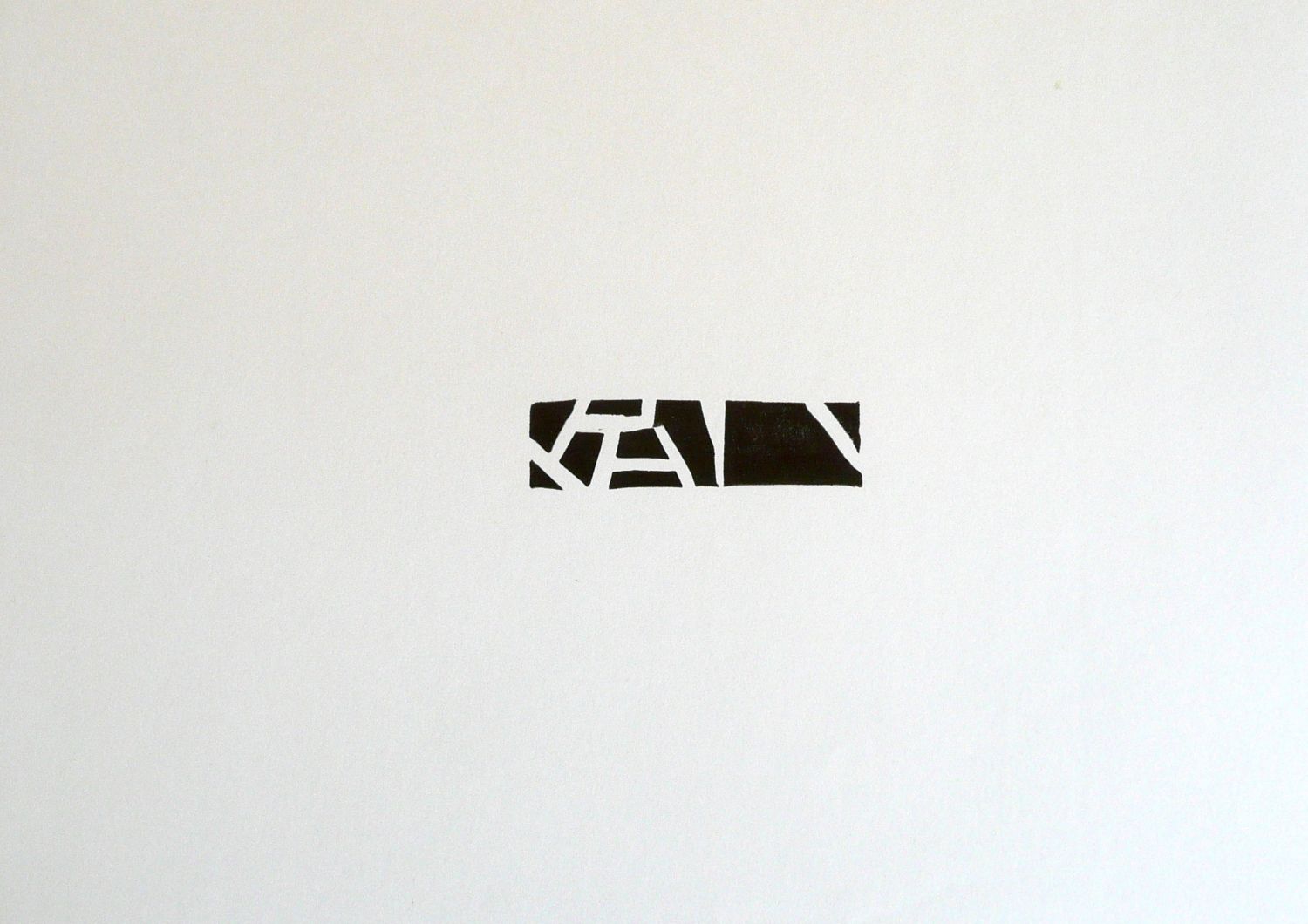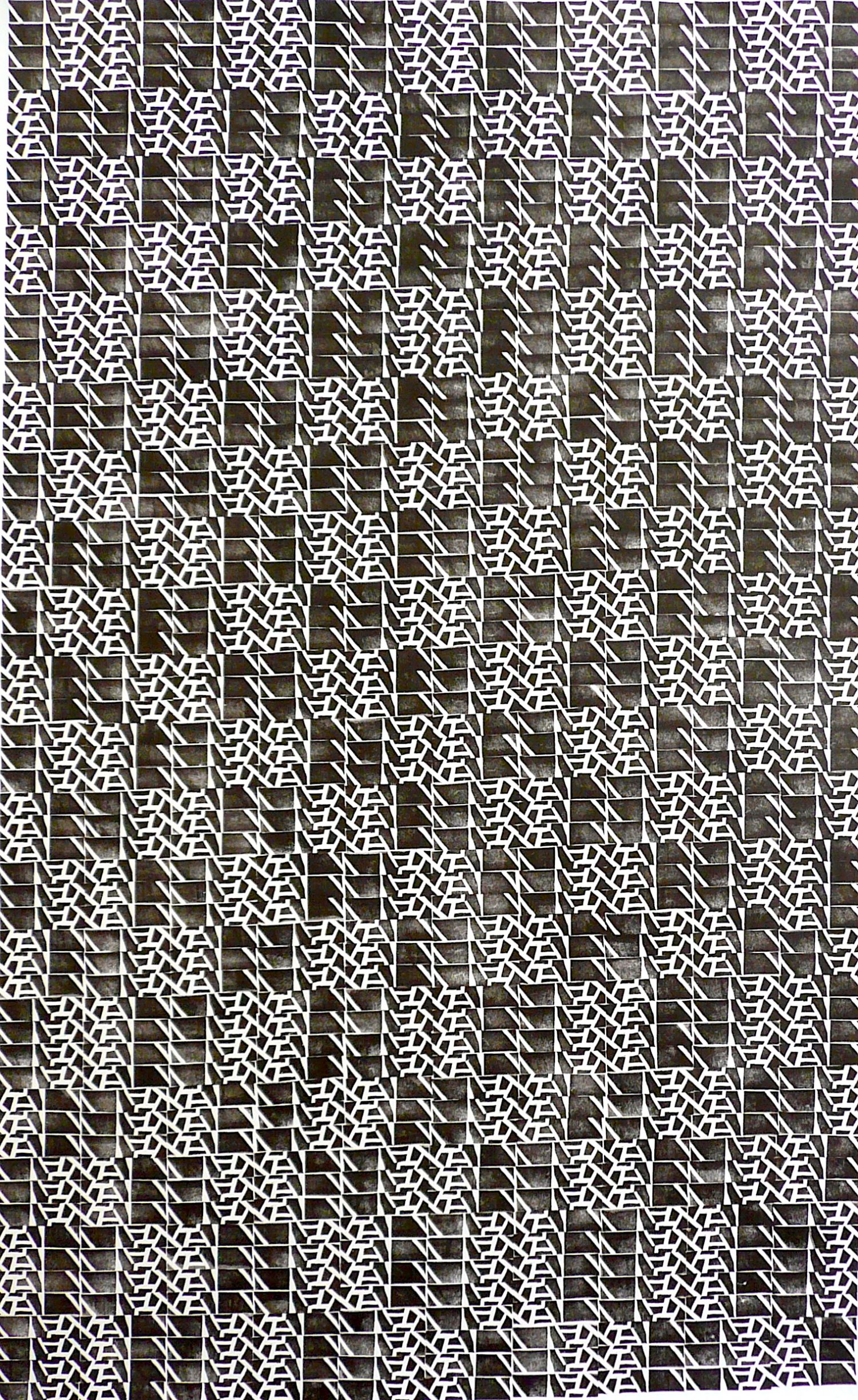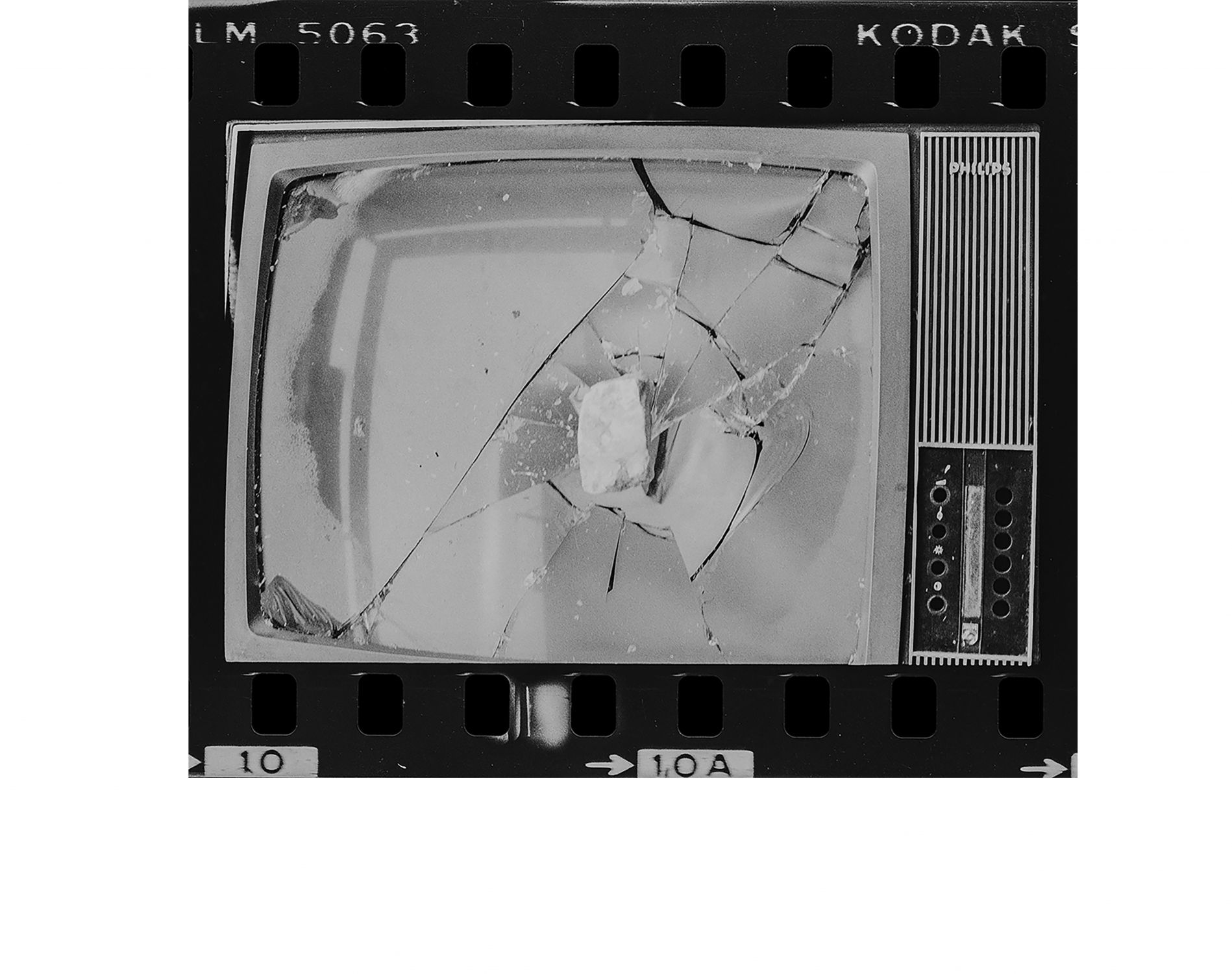13.06.2020 No. 35
Karolyn Morovati

Lothar Michael à propos Karolyn Morovati’s Stampiglien
[…] The dialetics of the more respectively less opens and unfolds itself in the presentation, thus in the designation – or say signification of an unoccupied ground; devoid of any determination, as if this were possible, such a serene inexistence; somehow something enters there as a sign, which marks a difference. This placement makes a distinction and likewise an appellation. It distinguishes a marked realm from an unmarked and identifies a naming. Here this first sign is a rubber stamp, i.e. a chunk of rubber, ostensibly again a formerly unmarked or quasi unmarked state of a space, or in this case a corpus; but as just implied, it is quite impossible to find a genuine blank, yet one has somehow to begin; so this quasi pristine chunk of rubber, which is actually already pre-marked by its very body shape, be it pre-fabricated by its production or re-shaped by the artist or whomsoever afore, and which subsequently has been additionally character-like carved and molded by the artist and to which some type of ink made of dye or pigment is applied, and thus adding another distinction and indication, another mark as it were, by color and texture; and this ink-coated rubber stamp is then pressed onto paper such that a colored image is transferred to that paper’s surface leaving there a first distinction and indication on this formerly (quasi-) blank, giving it a more.
And then some… by iteration, when the same stamp again is pressed onto the paper placing after or next to the previous image another one. A repetition, a re-naming, i.e. another distinction, but although the same stamp, the same ink is used and assuming the stamp is even placed directly after or next respectively below the previous image, this re-naming which strictly logically normally wouldn’t change the value of the first distinction, doesn’t lead here back again into the former same state. It adds. And soon the ground is overrun with signs, and teems, and intricate patterns appear.
[…]
And we as beholders, or contemplators, since we look upon traces of a bygone visual activity, internalizing it by letting our eyes wander over this assemblage, this congeries of signs and we find ourselves in a re-vision, a re-take of distinctions and indications, of placements, positings which for our wits form an area rug and therein a weaving sujet en procès[1], an interplay of simplicity and routh, adumbrating the existence of the fourth person singular[2], and any analysis of any Laws of Form[3] becomes minor in an instating drift. […]
Footnotes
- ^ Cf. Julia Kristeva, Le sujet en procès. In: id., Polylogue, Seuil, Paris 1977, pp. 55-106.
- ^ Lawrence Ferlinghetti, cit. by Gilles Deleuze, Logique du sens, Éditions du Minuit, Paris 1969, p.125.
- ^ Cf. for some inspirations of the above introductory words: George Spencer-Brown, Laws of Form. Allen & Unwin, London 1969.




